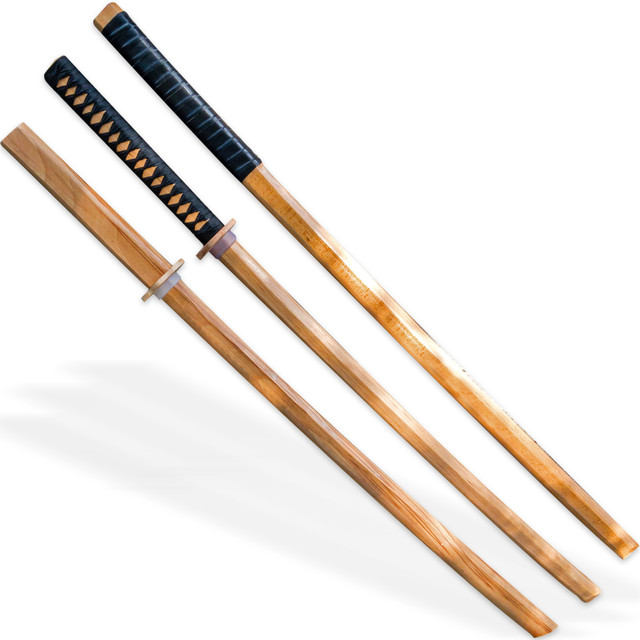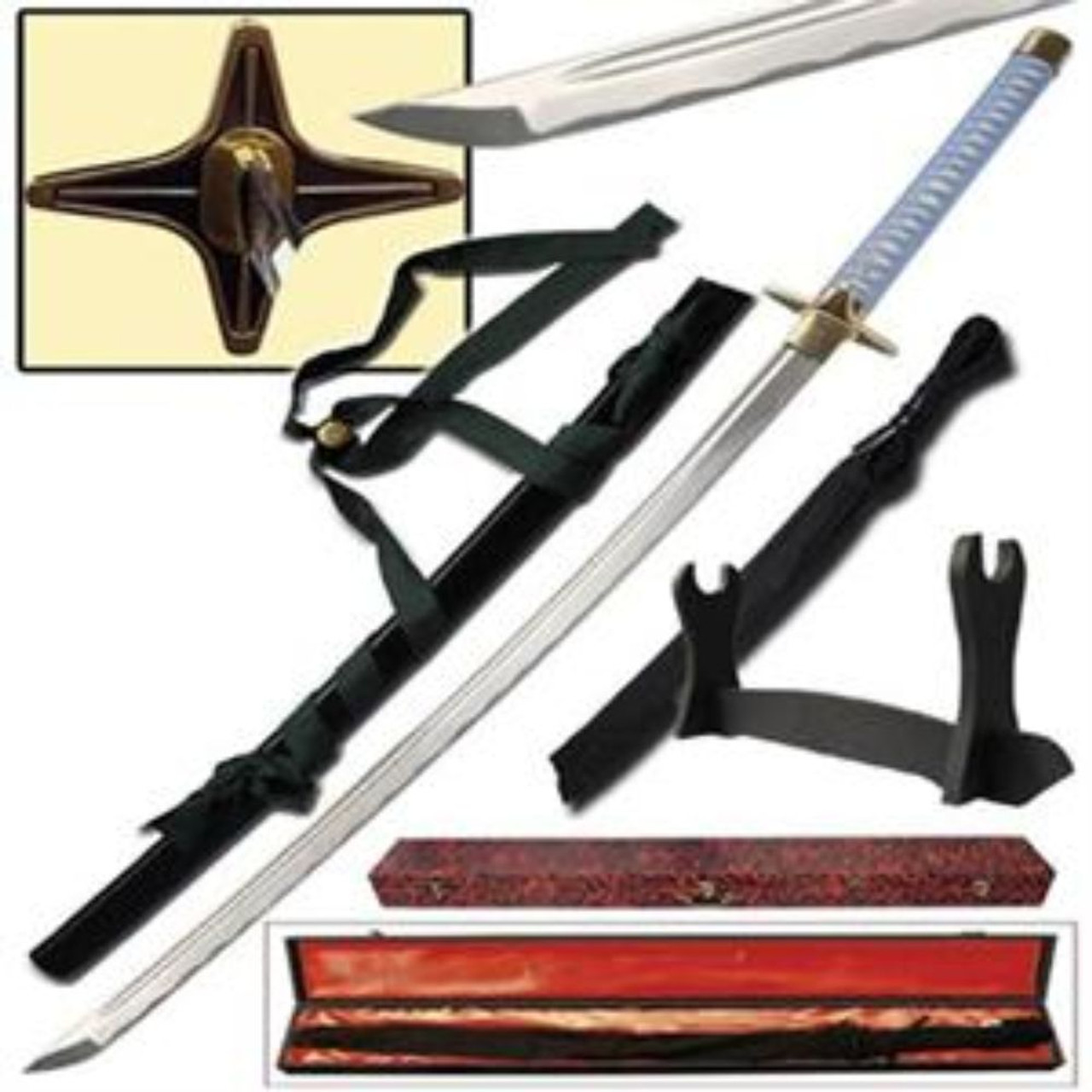Medieval Swords vs. Katanas: A Comparative Analysis
Posted by SwordsSwords on Sep 4th 2024
When we think of iconic swords, two types often come to mind: the medieval swords of Europe and the katanas of Japan. Both have earned legendary status, not just for their historical significance but also for their cultural impact. In this blog, we'll compare medieval swords and katanas, exploring their design, use, and the cultures that produced them.
Design and Construction
Medieval Swords
Medieval swords, often referred to as European swords, come in various styles, the most notable being the longsword. These swords typically feature a double-edged, straight blade, designed for both cutting and thrusting. The hilt usually includes a crossguard to protect the hand, and the pommel at the end of the hilt balances the sword's weight.
Swords were primarily made from high-carbon steel, forged by skilled blacksmiths. The blades were usually broader and heavier compared to katanas, allowing for powerful strikes. The design of these swords was influenced by the need to combat armored opponents, so they had to be sturdy enough to withstand heavy blows and penetrate armor.
Katanas
The katana, a traditional Japanese sword, is recognized for its curved, single-edged blade. Unlike the medieval sword, the katana's blade is slender and sharp, designed primarily for cutting. The katana's curvature allows for a smooth, efficient draw and cut, making it ideal for quick, fluid strikes.
Katanas are traditionally made using a folding technique that involves repeatedly heating, folding, and hammering the steel. This process creates a blade with a hard edge for sharpness and a softer core for flexibility, preventing the blade from shattering. The katana's construction is an art form in itself, reflecting the deep cultural significance of the sword in Japanese society.

Fighting Techniques and Usage
Medieval Swords
Medieval swords were used in a variety of combat situations, including one-on-one duels and large-scale battles. The fighting techniques employed with these swords, known as "swordsmanship," varied depending on the type of sword and the armor worn by opponents. Knights and soldiers trained in using both the sword and shield, as well as two handed sword techniques.
Due to the prevalence of armor, medieval sword fighting often involved powerful, precise strikes aimed at weak points in the armor. The versatility of medieval swords made them effective in both offensive and defensive maneuvers. The weight and design of these swords also allowed for parrying and counterattacks.
Katanas
Katanas were primarily used by samurai, the warrior class of feudal Japan. The fighting style associated with the katana, known as "kenjutsu," focuses on quick, precise strikes. Samurai were trained to draw the katana and strike in one fluid motion, a technique known as "iai."
The katana's design makes it particularly effective for slashing attacks. Samurai often relied on their speed and precision to strike critical areas of their opponent's body. Unlike the heavy armor used in medieval Europe, Japanese warriors typically wore lighter armor, making agility and quick reflexes essential in combat.
Cultural Significance
Medieval Swords
In medieval Europe, swords were more than just weapons; they were symbols of power, status, and honor. Knights often swore oaths of loyalty on their swords, and the sword itself was a central part of a knight's identity. The sword was also a key element in various religious and ceremonial practices, further emphasizing its importance in medieval culture.
The medieval sword is often romanticized in literature and folklore, representing the ideals of chivalry, bravery, and heroism. Iconic swords like Excalibur from Arthurian legend have become symbols of divine right and kingly authority.

Katanas
The katana holds a similar place of reverence in Japanese culture. It is often seen as an extension of the samurai's soul, embodying their honor, discipline, and loyalty. The process of forging a katana is steeped in ritual and tradition, reflecting the deep spiritual connection between the samurai and their sword.
Katanas have also been featured prominently in Japanese literature, art, and cinema. They are often depicted as weapons of great power, wielded by noble warriors with a strong sense of duty and honor. The katana's influence extends beyond Japan, as it has become a symbol of precision, craftsmanship, and martial prowess in global popular culture.
Conclusion
While medieval swords and katanas share some similarities as iconic weapons of their respective cultures, they differ significantly in design, fighting techniques, and cultural significance. Medieval swords, with their heavy, double-edged blades, were designed for versatile use in various combat scenarios, often against armored opponents. In contrast, katanas, with their slender, curved blades, were crafted for precision and speed, reflecting the samurai's emphasis on quick, decisive strikes.
Both types of swords have left a lasting legacy, not only as weapons but also as symbols of the values and ideals of the cultures that created them. Whether you're drawn to the raw power of the medieval sword or the refined elegance of the katana, there's no denying the impact these legendary weapons have had on history and the imagination of people around the world.Plus, if you want to buy any of them or any other swords for sale you can buy from swordsswords.com

